Distinguishing old-growth (presettlement) and post-settlement woodlands
“Expansion of pinyon and juniper woodlands with climate and anthropogenic-related disturbances over the past 150 years, makes distinguishing historic old-growth and post-settlement woodlands difficult”
Distinguishing post-settlement from old-growth or reestablishing persistent woodlands after a stand-replacing event is an important step to making vegetation management decisions. Proper identification can help identify potential vegetation and characteristics of the ecological site, including the historic disturbance regime.
Several tree form and bark characteristics in addition to the presence of large dead wood can help distinguish old-growth (presettlement) woodlands from encroaching post-settlement woodlands (Table 1, Figs. 1-5). Key characteristics to evaluate relate to tree age, woodland structure, and ecological site characteristics. Additional information is available in Miller et al. 2007; Tausch et al. 2009; Miller et al. 2019 (see p. 57).
Table 1. Tree characteristics and the presence of old large wood can be used to distinguish old-growth (presettlement) and post-settlement woodlands.
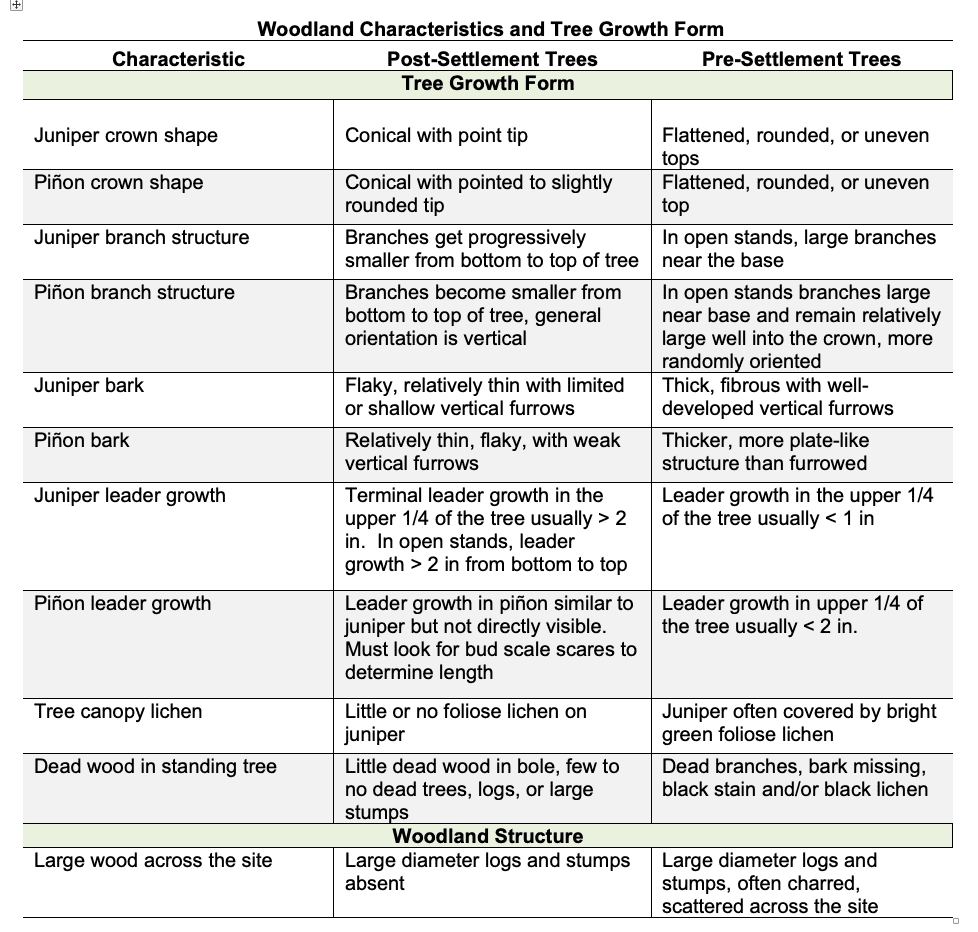
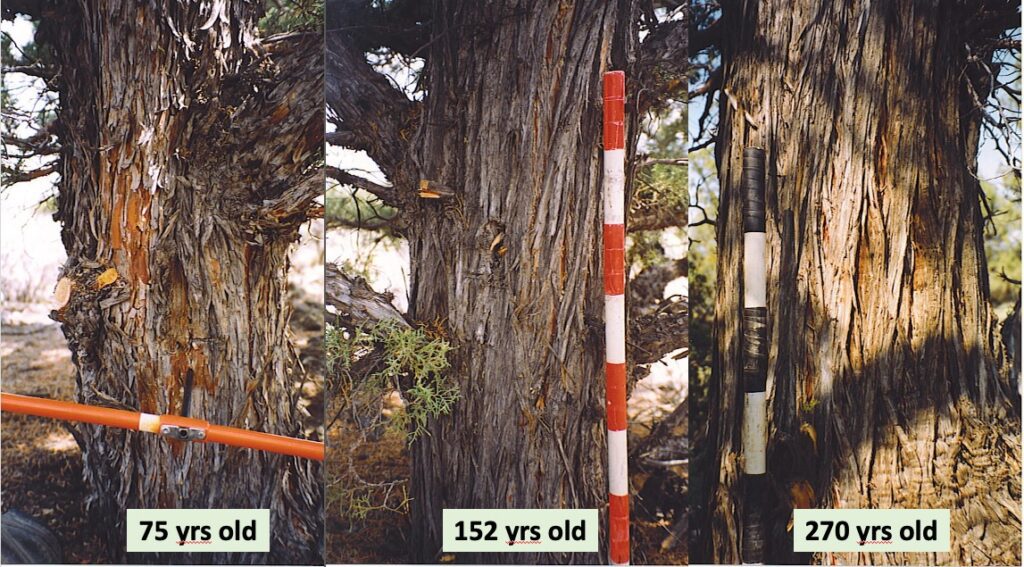
Fig. 1. Western and Utah juniper bark changes with age from thin and flaky (left) to fibrous and thick with well developed vertical furrows (right) (Photos: Rick Miller, Oregon State University).
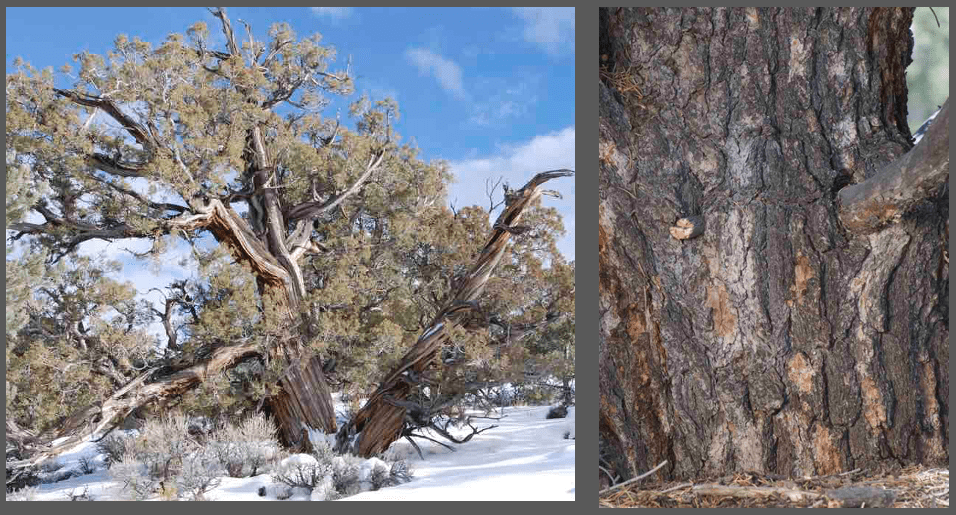
Fig. 2. Old-growth Utah juniper with fibrous deeply furrowed bark (left). Old-growth singleneedle pinyon with thick plate-like bark (right) (Photos: Schell Creek Range, NV, Rick Miller, Oregon State University).
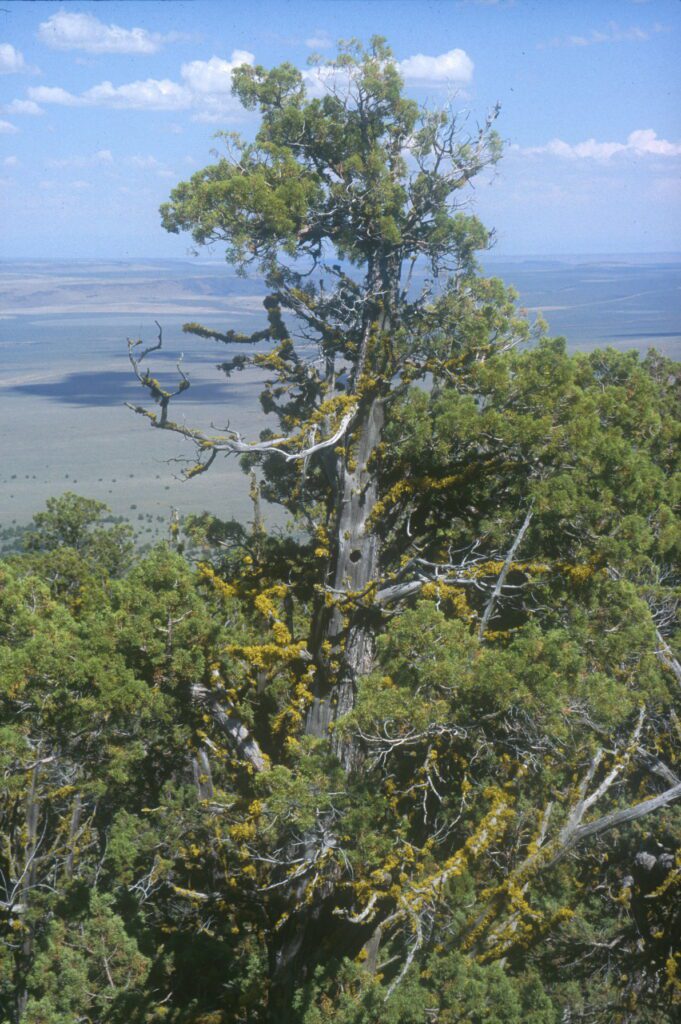
Fig 3. This tree exhibits several old growth characteristics; large dead limbs covered in lichen, portions of the trunk are dead, little branch leader growth, and bird cavities (Photo: Juniper Mountain, OR, Rick Miller, Oregon State University).
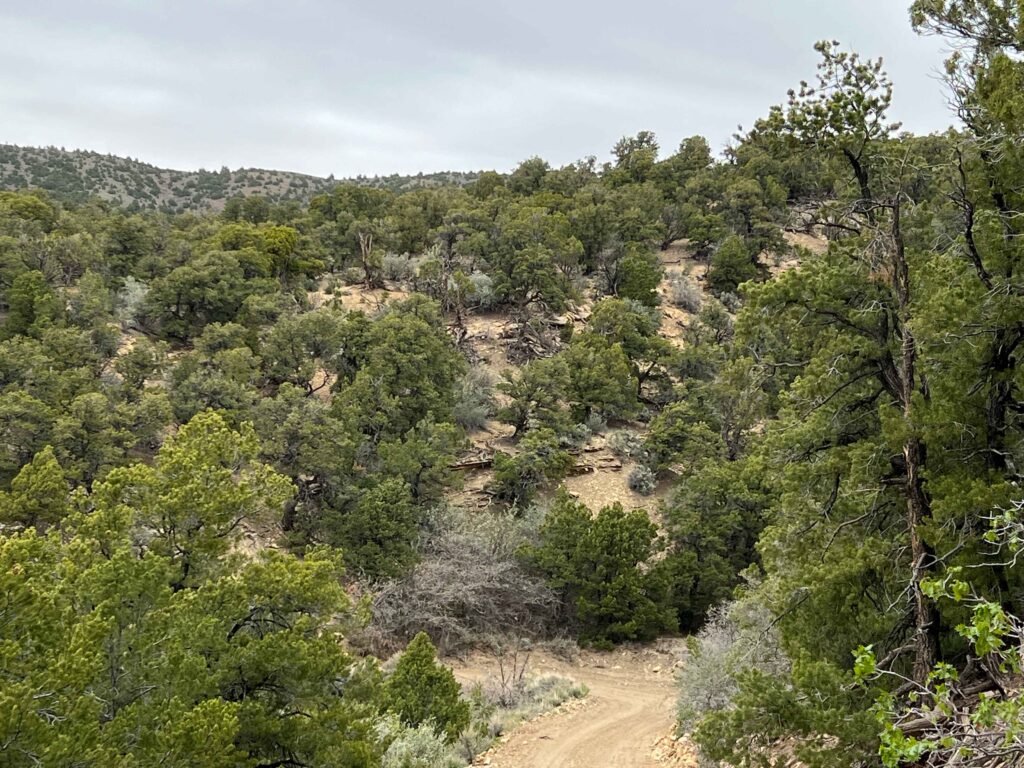
Fig 4. Pinyon and Utah juniper create a patchwork of old and young stands across this landscape, with age often related to aspect and soils. This old-growth woodland is on a south aspect with very shallow rocky soils and limited understory vegetation. Younger stands of trees occupy the more productive soils (Photo: Henry Mountains, Utah, Rick Miller, Oregon State University).
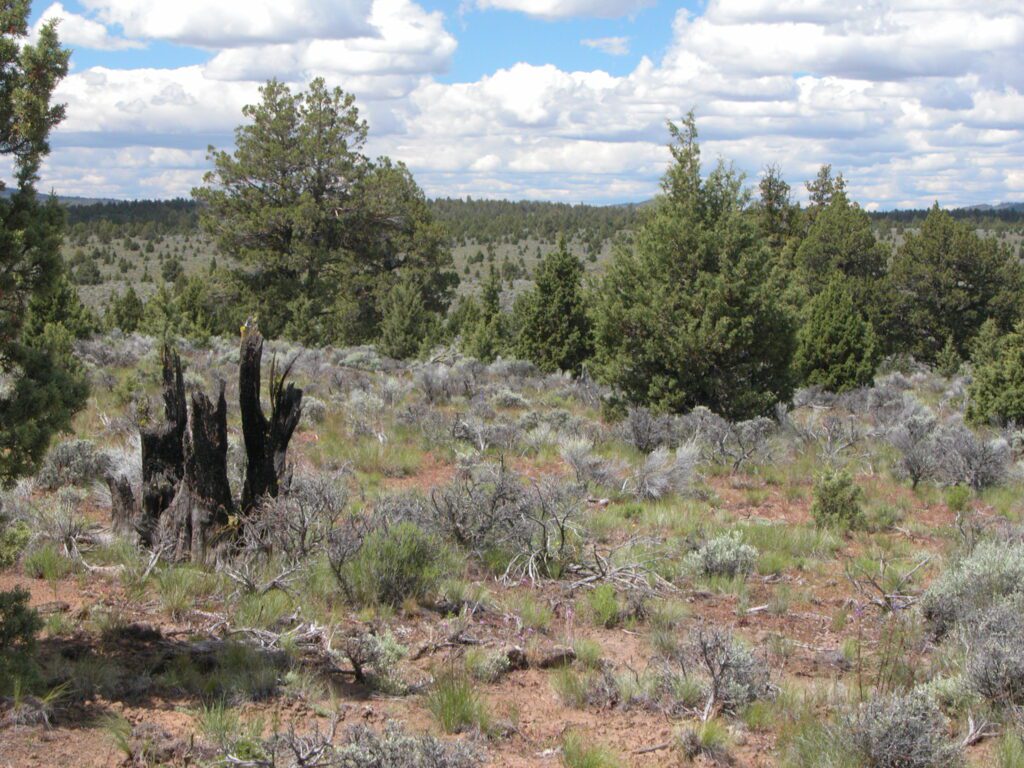
Fig 5. Walking through this stand one can find a low density of old standing live and dead trees in addition to large stumps and logs. Prior to a fire, 100+ years ago this was an open juniper shrubland with mountain big sagebrush, bitterbrush, and Idaho fescue in the understory (Photo: Walker Butte, eastern Oregon Rick Miller, Oregon State University).
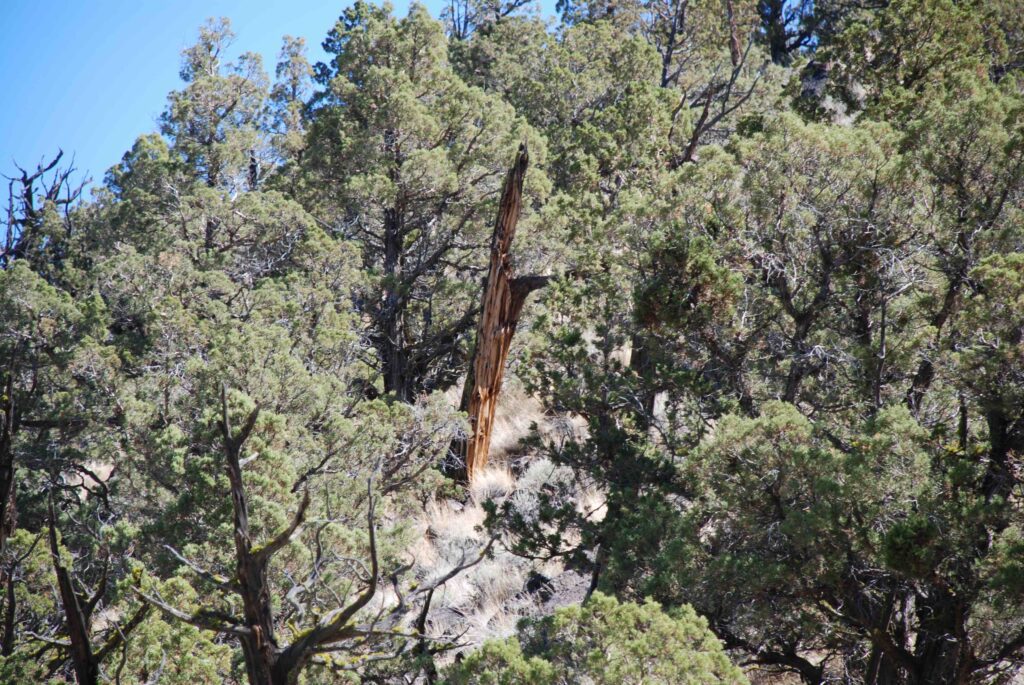
Fig 6. In very olds woodlands standing dead can accumulate over centuries. Standing dead trees with few to no remaining branches (shown in the picture) slowly weather-away and can remain standing for three or more centuries (Photo: Horse Ridge, eastern Oregon by Rick Miller Oregon State University).